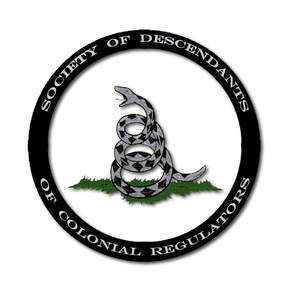I was asked to write a brief bio of my 9th great-grandmother who was accused of witchcraft in 17th century Massachusetts. I realized that, although I briefly referred to her on this blog, I never dedicated a post to her. Odd, because she is definitely one of my favorites to talk about.
So, here follows the story of my "witch" Mary Bliss Parsons.
Mary Bliss was born in England about
1626, the daughter of Thomas Bliss and Margaret Hulins. They were a Puritan
family and emigrated to New England in 1639. She married Cornet Joseph Parsons on 26 November 1646 in Hartford,
CT. He was a merchant and political figure and they first settled
in Springfield, MA. By 1654, they
had moved upriver to Northampton.
It was there, in September 1656 that Mary and Joseph
brought defamation charges against their neighbor Sarah Bridgman. Sarah blamed Mary for the death of her infant
son and accused her of witchcraft.
Mary Bliss Parsons was described as a proud and nervous
woman, haughty in demeanor. She belonged to the aristocracy and considered herself a dame of considerable importance. She was a woman of forcible speech and domineering ways and felt that her neighbors should have the benefit
of her opinions. She was not well liked in Springfield and this dislike followed her to Northampton.
The problem started when Goody Branch came from Springfield to visit Goody Hannum and several women gathered to visit. The
conversation began with the usual gossip, then turned to a discussion of personalities and then to witchcraft. The insinuation that Mary Parsons
was a witch was amplified and
enlarged upon until all present believed that it simply must be true. It was then repeated and embellished
upon to other neighbors who added their own “evidence”. When Joseph Parsons heard the accusations, he enlisted the aid of the law to clear his wife’s
name.
After hearing all of the testimony, the decision of the court was
that “the defendant hath without just ground
raised a great scandal and reproach upon the plaintiffs wife” and “the defendant shall make acknowledgment
before the inhabitants of the places where the said parties dwell ... Northampton and also Springfield
... at some public meeting.” The Bridgmans were
ordered to pay damages of 10 pounds and court costs of 7 pounds, 1
shilling and 8 pence.
But the story does not end there. Eighteen years later,
in September 1674, charges of witchcraft
were formally brought against Mary,
again by the Bridgmans and their
son-in-law Samuel Bartlett. They blamed Mary for the death of their daughter Mary Bartlett.
Because witchcraft was a capital crime, it could not be
tried in the county courts. That lower level court simply determined if enough
evidence existed to warrant
the attention of a higher court. This
was apparently the case because it was forwarded to the Court of Assistants in Boston. Mary’s husband Joseph posted bond
of 50 pounds. Mary was indicted
by a grand jury in March 1675
based on evidence sent from the County Court. She was tried for “not having the fear of God before
her eyes and ... at one or other of times ...
entered into familiarity with the devil and committed several acts of witchcraft”. She pled not
guilty. They jury found her not guilty
of witchcraft and she was discharged in May 1675.
Mary and Joseph spent their later years in Springfield. They had a total of 12 children, four of whom
reached adulthood. Joseph died on 9
October 1683 in Springfield at the age of 63.
Mary outlived him, dying on 29 Jan 1712 in Springfield.
This story will appear, along with other biographies of accused witches on the website of the Associated Daughters of Early American Witches at www.adeaw.us
